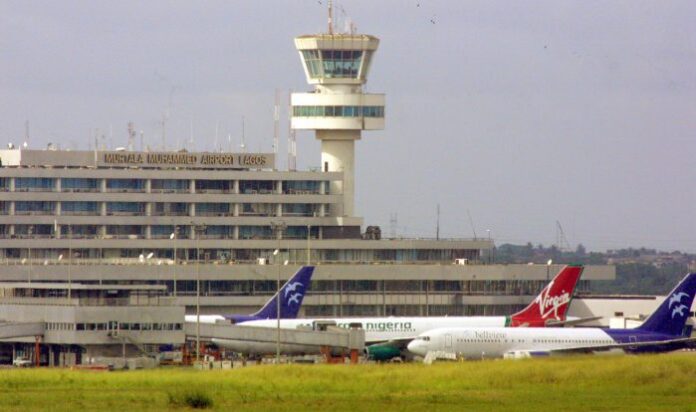By Gabriel Agbeja
The Federal Government recently announced the designation of four international airports as Special Economic Zones.
The airports are: Murtala Muhammad International Airport, Lagos; Nnamdi Azikiwe International Airport, Abuja (NAIA); Port Harcourt International Airport, and the Mallam Aminu Kano International Airport, Kano.
Stakeholders said that expanding air services would lead to significant improvements in service delivery and national economy in general.
Minister of Aviation Hadi Sirika who announced the designation of the airports via a statement issued by Mr James Odaudu, the Director, Public Affairs, Ministry of Aviation, said the approval was granted by President Muhammadu Buhari.
He stressed that there were many benefits in designating the airports as special economic zones.
“The Ministry of Aviation in its desire to address issues concerning taxation, custom duties and fiscal issues in the Nigerian aviation industry which required a holistic solution, had requested the Nigerian Export Processing Zone Authority (NEPZA) to designate the four major international airports under NEPZA Act.
“The request was made so that the benefits of such zones can be accorded all airlines, airport operators, aviation support companies among others that reside within the zones which the President noted, and approved.
“Some of the benefits include: harnessing the socio-economic benefits derivable from civil aviation, generating revenues for government and creating avenues to mobilise local and foreign direct investment for overall growth of the economy,” he said.
He further said that the designation was also expected to attract more international and domestic airlines and world class organisations into the Nigerian aviation industry to fast track development of new infrastructure and facilities at the airports.
Sirika noted that the special economic zones would also help to reduce the tax burden on aviation companies to enable them compete internationally.
He said that the move would also create more efficient and business-friendly trade environment comparable to other countries, with less bureaucratic red tape because of the associated fiscal incentives and packages.
According to him, the operation of the airports as special economic zones would also help to generate employment opportunities and human capital development.
The minister said that it would further improve the overall ease of doing business in Nigeria in line with Federal Government’s commitments towards national economic development.
“Another benefit is the generation of additional non-aeronautical sources of revenue for the aviation industry, as promised at the inception of the Buhari administration.
“The government remains committed to the development of an investment-friendly aviation sector that will not only make Nigeria a regional hub for air transportation, but increase its contribution to the national gross domestic product,” he said.
Mr Mahmud Sani, the Airport Manager, NAIA, reaffirmed the commitment of management team to intensify efforts to sustain the standard and integrity of the airport.
Sani spoke in Abuja at an “Airport Emergency Mock Exercise Difficult Terrain,’’ a process needed for recertification of the airport, said the management would further make frantic efforts to ensure that Civil Aviation Authority (CAA) recertify NAIA.
Sani said that certification is carried out every three years, adding that NAIA was certified in 2017 and was due for recertification.
“Today, we have just exercised our “Airport Emergency Programme.
“It is part of our recertification process. NAIA was certified about three years back, so we are in the process of recertification of Nnamdi Azikiwe International Airport, Abuja.
“This programme we experienced today was part of requirements to fulfill the requirement by the CAA and we have just done it.
“We tried to do this exercise to see how we can mobilise our human resources at the time of accident in an airdrome. We have fire and rescue department manning the airport 24 hours,” he said.
The manager disclosed that the exercise was mainly about how to rescue victims from accident at the difficult terrains.
Sani said that the exercise had helped to advance the usage of telecommunication gadgets, adding that it had equally helped in demonstrating how stakeholders could respond in real accident.
“As an airport operator, we go into Memorandum of Understanding (MoU) with sister organisations in case of incidence or accident in the airport, so that they can come to our rescue.
“With this exercise, we are able to see response of our stakeholders, which is commendable.
“They are Teaching Hospitals, Air Force, Fire Fighter Service, Police, Civil Defence, NEMA, and Road Safety Corps. All of them have been mobilised and they are here. These are things we achieved today, “he said.
Sani further said that the exercise had helped to identify some failures in the activities of the airport, stressing that they would be corrected.
“So far, so good, we are going back to assess ourselves inside the Emergency Operation Centre with all the stakeholders.
“We have some observers that oversight this exercise that will tell us the shortcomings and then we work on them, “he added.
Mr Rindap Nantim, Deputy General Manager, Aerodrome Rescues and Fire Fighter Department in NAIA, who also spoke, said that the exercise offered opportunity to experts in the department to display their skills.
According to him, Federal Airports Authority of Nigerian (FAAN) service is specially planned in such a way that any fire fighter that reports to duty can carry out a check on equipment.
According to Nantim, the issue of lack of water is not applicable to airdrome as there is water everywhere.
He added that the vehicles at the airport were designed to operate within given period of time.
“The moment you arrived at the crash scene, in the first three minutes, if the man does not have required foremanships training, he uses the monitor to operate.
“That is less than a minute because the 10,000 litres capacity vehicle can exhaust in three minutes.
“With the training, I think our men are better positioned. They have the response capability to carry out their job very well even in rough terrain, “he said.
Nigeria to boost economy through airport special economic zones zones
RELATED ARTICLES




